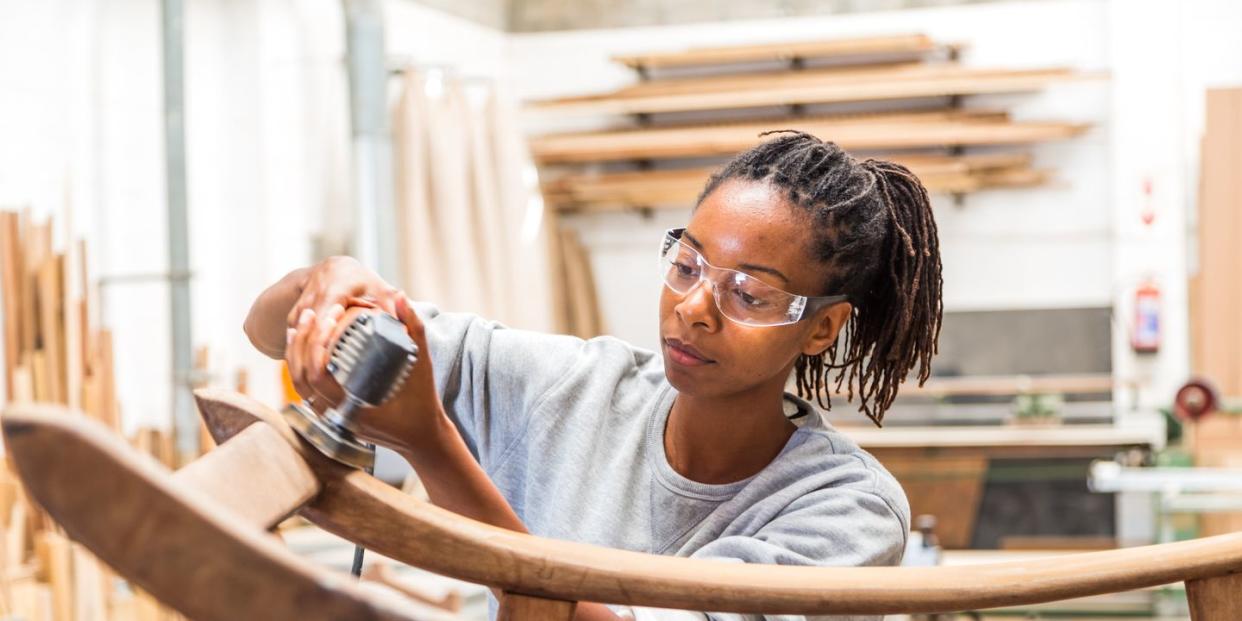When to Rehab a Piece of Old Furniture Yourself, and When to Leave it to the Pros

So you found a piece of furniture at a flea market that has good bones, but could use a little (or a lot of) TLC. When should you tackle the rehab project—say, re-staining a credenza or reupholstering a chair—by yourself, and when are you better off leaving the job to professionals? To start, you need to know that refinishing or painting a piece of handmade antique furniture can majorly diminish its value, cautions Hayley Redmond Cilley, who, along with her husband Craig runs TiltTopLiving, an Instagram account they started to educate people about antiques and how to incorporate these gems into a modern home. For this reason, it’s first important to identify if the piece you’re eyeing for a makeover is a period antique. (An antique is defined as being 100 years old, meaning that every year pieces move from being vintage to antique as they reach their 100th birthday—their "Antique Birthday" if you will, Redmond Cilley says.) Then, asses how to proceed according to these tips form the pros.
When to Rehab a Piece of Furniture on Your Own
Depending on your DIY prowess, some rehab projects are ripe for tackling on your own. They range from updating handles on a dresser to gluing loose joints. Here’s some more common projects you can do at home.
Painting and Refinishing Flea Market Finds
If you’re a beginner in the do-it-yourself department, painting flea market finds is a good place to start, says Atlanta-based designer Theresa Ory. “If you’ve tackled some smaller projects and are ready for a new challenge; sanding, staining, or refinishing wood is a great next step for the intermediate rehabber,” she says. Here are designers' go-to paint colors for furniture.
Buffing Water Marks and Fixing Wood Scratches
Many secondhand furniture pieces have water stains or other markings on the surface, says Craig Redmond Cilley. This is an easy fix for amateur DIYers: Using boiled linseed oil and fine grade steel wool, scrub in a circular motion with light pressure to buff away the water marks, he suggests. Employing furniture polish that matches the wood is an easy fix for scratches. Deeper scratches will require some more serious buffing, but still is an approachable DIY task, Craig Redmond Cilley says.
(Here’s some more tips for getting rid of pesky water stains on wood).
For chairs with removable seats, it can save a good bit of money to reupholster at home, says Hayley Redmond Cilley. “There are abundant tutorials available, but it does help to own or borrow a staple gun,” she says. Reupholstering an entire piece of furniture is something that requires a good amount of sewing skills and precision, so it should be a project reserved for advanced DIYers or the pros, Hayley Redmond Cilley says.
Refinishing vintage furniture or repairing veneer
If you’ve got some rehabbing experience under your belt, you may be able to refinish vintage or reproduction furniture on your own, Hayley Redmond Cilley says. (Don’t decimate the value of those antique pieces by refinishing them on our own, though!) This DIY requires sanding equipment and you’ll need to be able to spot veneered pieces, she says. (Veneer is usually a very thin fancier wood glued on a less expensive base wood, and sanding through veneer can be bad for the piece).
Also, veneered furniture can have small chips or missing pieces, Hayley Redmond Cilley says.
“Fixing these chips can be a challenge because it requires more than just cutting a new piece to size and gluing,” she explains. You have to hunt down a veneer sheet that matches the wood and then stain it to match the piece. If you’re up for a challenge, this could be a DIY project.
When to Leave a Project to the Pros
As a general rule, family heirlooms that you don’t want to risk damaging in a DIY project and handmade antiques that need a good restoration are best left to the pros.
If It’s a Precious Piece
The best way to determine whether you should tackle a project on your own or leave it to the professionals is asking yourself how important the outcome is, Ory says. “If you have a precious piece of furniture that needs some love but has been in the family for generations and you would be devastated to lose it, it’s best to hire a professional to see that project through,” she says.
There’s Major Structural Damage
You could switch out handles on your own. But If a piece has some major structural damage like a missing foot or fractured leg, it's best to leave that to the pros, says Craig Redmond Cilley. “Not only does it take serious woodworking equipment to make those repairs, it's also easy to make things worse instead of making them better,” he explains.
Handmade Antiques
Antique furniture may be a candidate for refinishing if it’s been bleached by sun exposure or has significant water or smoke damage, Craig Redmond Cilley says. In order to preserve the piece’s value and integrity, this is a project for the professionals.
Where to Find a Professional for a Rehab Project
We’ll let you in on a designer-approved secret: When looking for a professional to tackle the rehab of an antique or vintage piece, ask your local antique shop who’d they recommend in the area. They are often a wealth of knowledge, Ory says. They’re likely to have a go-to list of pros who specialize in everything from furniture repairs to intensive upholstery projects.
Follow House Beautiful on Instagram.
You Might Also Like

